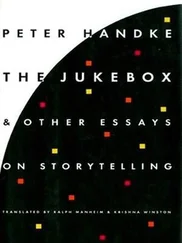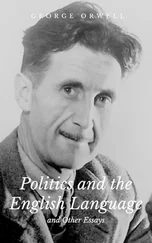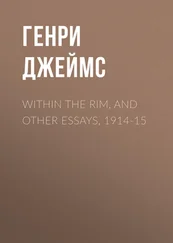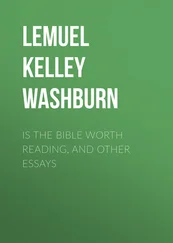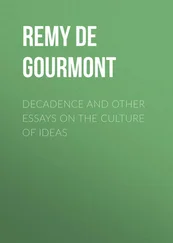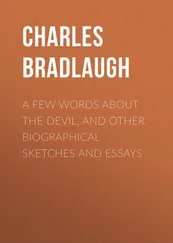To these what-looks-like-pain-is-really-just-reflexes counterarguments, however, there happen to be all sorts of scientific and pro — animal rights counter-counterarguments. And then further attempted rebuttals and redirects, and so on. Suffice it to say that both the scientific and the philosophical arguments on either side of the animal-suffering issue are involved, abstruse, technical, often informed by self-interest or ideology, and in the end so totally inconclusive that as a practical matter, in the kitchen or restaurant, it all still seems to come down to individual conscience, going with (no pun) your gut. (back to text)
21 Meaning a lot less important, apparently, since the moral comparison here is not the value of one human’s life vs. the value of one animal’s life, but rather the value of one animal’s life vs. the value of one human’s taste for a particular kind of protein. Even the most diehard carniphile will acknowledge that it’s possible to live and eat well without consuming animals. (back to text)
1 From “Can These Bones Live?” in The Edward Dahlberg Reader, New Directions, 1957. (back to text)
2 Of course, contemporary literary theory is all about showing that there’s no real distinction between these two ways to read — or rather it’s about showing that aesthetics can pretty much always be reduced to ideology. For me, one reason Frank’s overall project is so worthwhile is that it shows a whole different way to marry formal and ideological readings, an approach that isn’t nearly as abstruse and (sometimes) reductive and (all too often) joy-killing as literary theory. (back to text)
3 The amount of library time he must have put in would take the stuffing out of anybody, I’d imagine. (back to text)
4 Among the striking parallels with Shakespeare is the fact that FMD had four works of his “mature period” that are considered total masterpieces — Crime and Punishment, The Idiot, Demons (a.k.a. The Demons, a.k.a. The Devils, a.k.a. The Possessed ), and The Brothers Karamazov — all four of which involve murders and are (arguably) tragedies. (back to text)
5 Volume III, The Stir of Liberation, includes a very fine explicative reading of Notes, tracing the book’s genesis as a reply to the “rational egoism” made fashionable by N. G. Chernyshevsky’s What Is to Be Done? and identifying the Underground Man as basically a parodic caricature. Frank’s explanation for the widespread misreading of Notes (a lot of people don’t read the book as a conte philosophique, and they assume that Dostoevsky designed the Underground Man as a serious Hamlet-grade archetype) also helps explain why FMD’s more famous novels are often read and admired without any real appreciation of their ideological premises: “The parodistic function of [the Underground Man’s] character has always been obscured by the immense vitality of his artistic embodiment.” That is, in some ways Dostoevsky was too good for his own good. (back to text)
6 This last one Frank refers to as The Devils. One sign of the formidable problems in translating literary Russian is the fact that lots of FMD’s books have alternative English titles — the first version of Notes from Underground I ever read called itself Memoirs from a Dark Cellar. (back to text)
7 Never once in four volumes does Professor Frank mention the Intentional Fallacy7(a) or try to head off the objection that his biography commits it all over the place. In a way this silence is understandable, since the tone Frank maintains through all of his readings is one of maximum restraint and objectivity: he’s not about imposing any particular theory or method of decoding Dostoevsky, and he steers clear of fighting with critics who’ve chosen to apply their various axes’ edges to FMD’s work. When Frank does want to question or criticize a certain reading (as in occasional attacks on Bakhtin’s Problems of Dostoevsky’s Poetics, or in a really brilliant response to Freud’s “Dostoevsky and Parricide” in the appendix to Volume I), he always does so simply by pointing out that the historical record and/or Dostoevsky’s own notes and letters contradict certain assumptions the critic has made. His argument is never that somebody else is wrong, just that they don’t have all the facts.
What’s also interesting here is that Joseph Frank came of age as a scholar at just the time when the New Criticism was becoming entrenched in the US academy, and the good old Intentional Fallacy is pretty much a cornerstone of New Criticism; and so, in Frank’s not merely rejecting or arguing against the IF but proceeding as if it didn’t even exist, it’s tempting to imagine all kinds of marvelous patricidal currents swirling around his project — Frank giving an enormous silent raspberry to his old teachers. But if we remember that New Criticism’s removal of the author from the interpretive equation did as much as anything to clear the way for poststructural literary theory (as in e.g. Deconstruction, Lacanian psychoanalysis, Marxist/Feminist Cultural Studies, Foucaultian/ Greenblattian New Historicism, & c.), and that literary theory tends to do to the text itself what New Criticism had done to the author of the text, then it starts to look as if Joseph Frank is taking a sharp early turn away from theory7(b) and trying to compose a system of reading and interpretation so utterly different that it (i.e., Frank’s approach) seems a more telling assault on lit theory’s premises than any frontal attack could be.
7(a)In case it’s been a long time since freshman lit, the Intentional Fallacy = “The judging of the meaning or success of a work of art by the author’s expressed or ostensible intention in producing it.” The IF and the Affective Fallacy (= “The judging of a work of art in terms of its results, especially its emotional effect”) are the big two prohibitions of objective-type textual criticism, especially the New Criticism.
7(b)(said theory being our own age’s big radical-intellectual fad, rather as nihilism and rational egoism were for FMD’s Russia) (back to text)
8 It seems only fair to warn you, though, that Frank’s readings of the novels are extremely close and detailed, at times almost microscopically so, and that this can make for slow going. And also that Frank’s explications seem to require that his reader have Dostoevsky’s novels fresh in mind — you end up getting immeasurably more out of his discussions if you go back and actually reread whatever novel he’s talking about. It’s not clear that this is a defect, though, since part of the appeal of a literary bio is that it serves as a motive/occasion for just such rereading. (back to text)
9 That distinctive singular stamp of himself is one of the main reasons readers come to love an author. The way you can just tell, often within a couple paragraphs, that something is by Dickens, or Chekhov, or Woolf, or Salinger, or Coetzee, or Ozick. The quality’s almost impossible to describe or account for straight out — it mostly presents as a vibe, a kind of perfume of sensibility — and critics’ attempts to reduce it to questions of “style” are almost universally lame. (back to text)
10 One has only to spend a term trying to teach college literature to realize that the quickest way to kill an author’s vitality for potential readers is to present that author ahead of time as “great” or “classic.” Because then the author becomes for the students like medicine or vegetables, something the authorities have declared “good for them” that they “ought to like,” at which point the students’ nictitating membranes come down, and everyone just goes through the requisite motions of criticism and paper-writing without feeling one real or relevant thing. It’s like removing all oxygen from the room before trying to start a fire. (back to text)
Читать дальше

